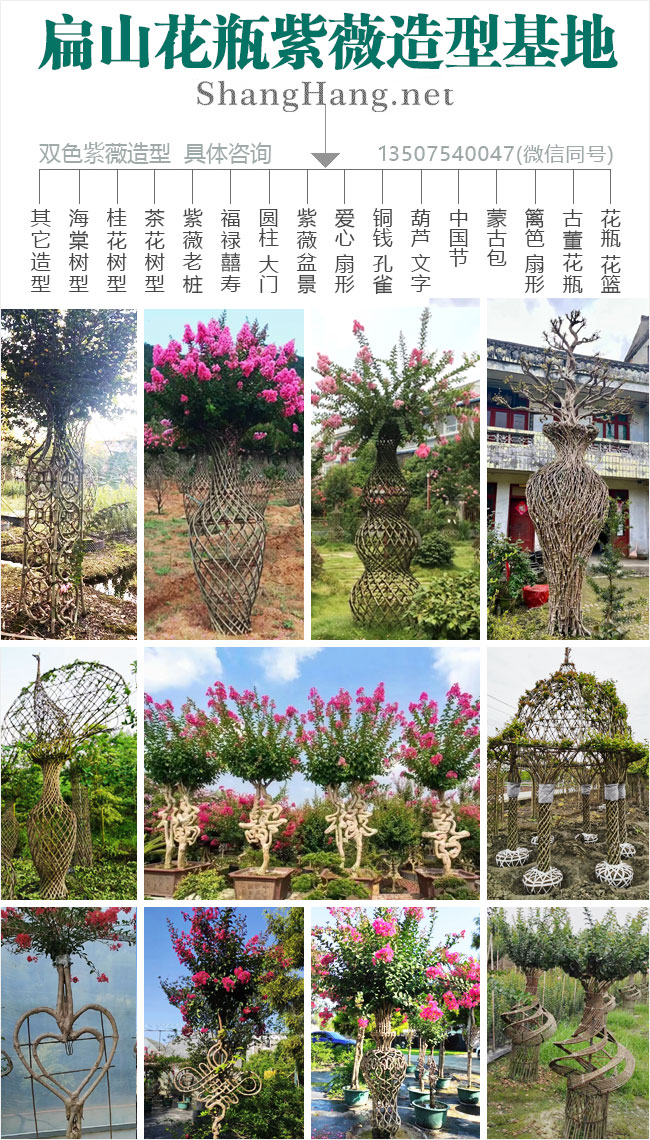規格編織扁山基地廣東、福建、江西、浙江展示紫薇造型樣式如下:1米、1.2米、1.5米C-Z2-W0、1.8米、2.2米紫(zǐ)薇(wēi)編織造型大型規模基地歡迎您、3.2米(mǐ)、4.2米(mǐ)、5.2米、銅錢大批發電話13507五40047價格好、花瓶、籬笆、孔雀、款式多、便宜、質量高、基地大、花籃(lán)、蒙古(gǔ)包(bāo)、紫薇單杆樹苗培育、圓柱體、椅子、紫薇老樁、小苗、紅火箭(jiàn)、天鵝絨、凳子、古董花瓶全部愈合、半愈合、未愈合紫薇、紫薇老樁二種顏色基地直接批發,全國(福建、廣東、浙(zhè)江、江西、貴州(zhōu)、雲南、湖南、陝(shǎn)西(xī)、海南、湖(hú)北、廣(guǎng)西)送貨上門、紫薇造(zào)型編織高度不等,同時(shí)有油茶苗 、茶花苗、金線蓮種苗、茶花(huā)苗培育,有茶(chá)油和楊梅果實回收。
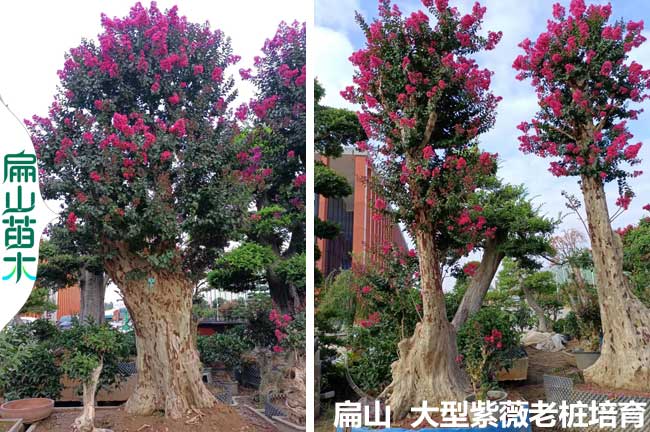
繁殖方法通過特定(dìng)的繁殖(zhí)技術手段,能夠培育出適應城市園(yuán)林綠(lǜ)化景觀的紫薇(wēi)植株品種,從而進一步降低紫薇園林的栽植與管養成本,提升園林建設效果(guǒ)。造型福建花瓶(píng)紫薇 福建紫薇樹苗福州、寧德廈門(mén)批發680元一顆、雲南和福建紫薇老樁造(zào)型常見的紫薇、植株繁殖方法主要包括以下幾種類型(xíng)。為先是播種繁殖,由園林管理人員在年末特定時間(jiān)周期對紫薇花的種子進行采收,並(bìng)於(yú)次年春季在砂質壤土當中進行播種,這種繁殖方式流程較為簡(jiǎn)單,雲南和福(fú)建紫薇老樁造型成本較為低廉,但往(wǎng)往(wǎng)難以控製植株的繁殖效果。
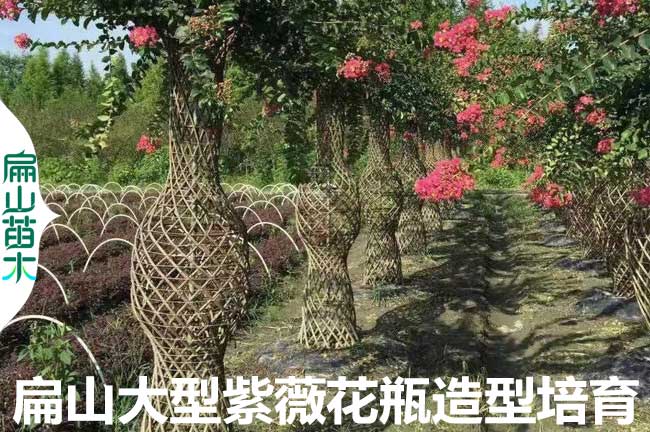
在園(yuán)林(lín)景觀的建設與設(shè)計(jì)過程當中,做好花期管理工作,對提升園林整體視覺體驗以及視覺效果具有重要作用。園林管理技術人員應當按照景觀展示需要對(duì)殘(cán)花進行剪除,有效減少果實(shí)對(duì)營養的吸收(shōu),浙江和江西紫薇剪除殘花控製花期使紫薇(wēi)植(zhí)株(zhū)能夠從剪口部位重新萌發新芽並(bìng)開花,浙江和江西紫薇剪除殘花控製花(huā)期有效延長(zhǎng)紫薇植株花期,使城市(shì)園林景觀的設計與建設效果得到顯著提升。相關技術人員以及管理人員應(yīng)當針對性做好對於紫(zǐ)薇植株花期的跟蹤記錄工作,使殘花剪除以及花期控製工作更具針(zhēn)對性與規範(fàn)性,為提升園林景(jǐng)觀視(shì)覺效果(guǒ)提供相應(yīng)的支持和幫助。
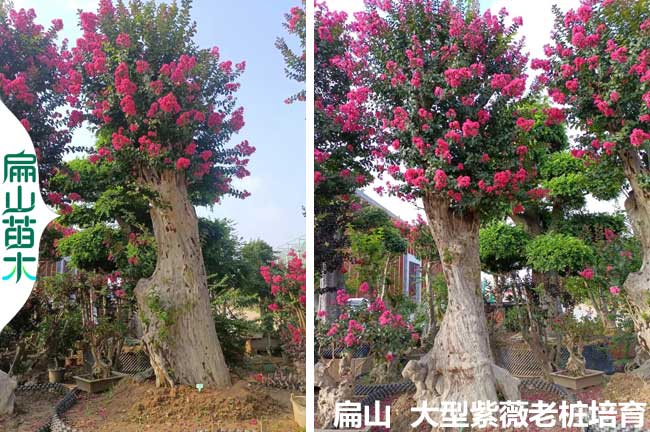
紫薇的文化價值(zhí)與藝術表現(xiàn)、紫薇花寓意的曆(lì)史沿(yán)革 紫薇在我(wǒ)國(guó)已有較為(wéi)悠久的發展曆史。在一千(qiān)七百多年以前的(de)東晉時期,就有關於(yú)人工種植紫薇的相關記載。到了唐代,四川和貴州紫薇花瓶造型紫薇花以其花色、形態等因(yīn)素的影響,與政治、皇權產生了較為緊密的聯係,很多詩(shī)人(rén)也開始以紫薇為意象進行創作,白居易、李商隱等大家紛紛祭(jì)出名篇佳(jiā)作,杜牧更是自比「紫薇舍人」,有(yǒu)唐以來的紫薇文化給(gěi)後世帶來了極為深遠的影響。四川(chuān)和貴州紫薇花瓶造型到了明清(qīng)兩代,紫薇(wēi)栽培(péi)種植技術得到了長(zhǎng)足(zú)發展,紫(zǐ)薇還(hái)成為(wéi)了吉祥與長壽的象征,深受人們的喜(xǐ)愛與讚頌。
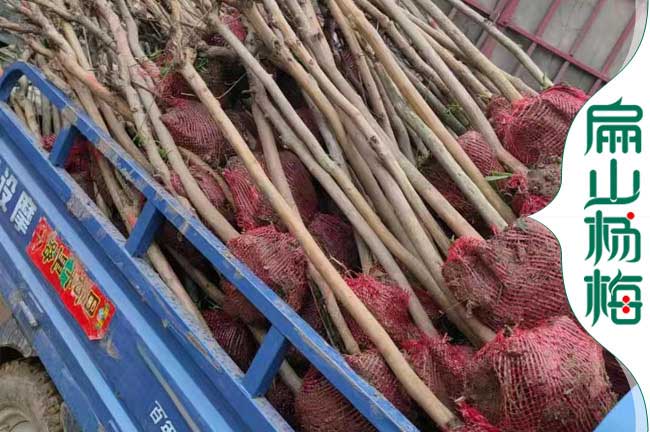
flat mountain base displays the following styles of crape myrtle: 1 meter, 1.2 meter, 1.5 meter, 1.8 meter, 2.2 meter, 3.2 meter, 4.2 meter, 5.2 meter, vase, fence, peacock, copper coin wholesale phones number 13507五40047, with good prices, multiple styles, cheap prices, high quality, large base, flower baskets, yurts, cylinders, chairs, crape myrtle old piles, seedlings, red rockets, velvet, stools, antique vases, all healing, semi healing Unhealed crape myrtle and crape myrtle old pile are directly wholesale in two color bases, and are delivered to customers nationwide (Fujian, Guangdong, Zhejiang, Jiangxi, Guizhou, Yunnan, Hunan, Shaanxi, Hainan, Hubei, Guangxi) with varying heights of crape myrtle shape weaving.
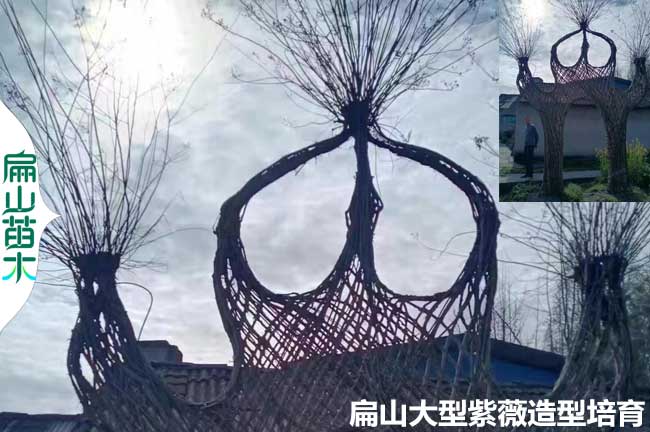
The breeding method can cultivate varieties of Ziwei plants that are suitable for urban landscaping through specific breeding techniques, thereby further reducing the planting and management costs of Ziwei gardens and improving the effectiveness of garden construction. The common methods for propagation of crape myrtle plants in Yunnan and Fujian include the following types. The first is sowing and propagation, where garden management personnel collect the seeds of the crape myrtle flower at a specific time cycle at the end of the year, and sow them in sandy loam the following spring. This propagation method has a relatively simple process, and the cost of the Yunnan and Fujian crape myrtle old pile design is relatively low, but it is often difficult to control the reproductive effect of the plant.
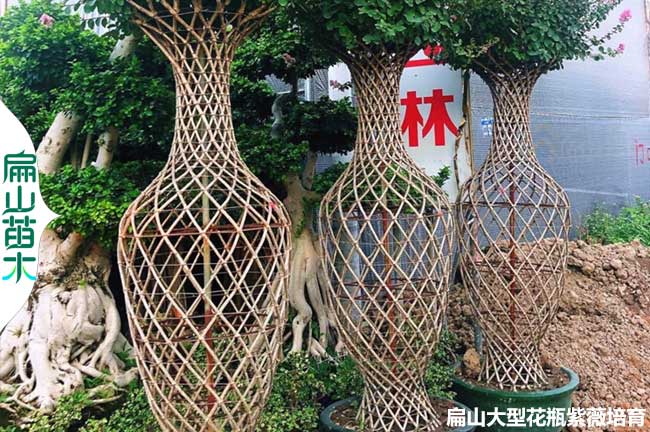
Zhejiang and Jiangxi crape myrtle In the construction and design process of garden landscapes, doing a good job in flowering management plays an important role in improving the overall visual experience and visual effect of the garden. Landscape management technicians should cut off residual flowers according to the needs of landscape display, effectively reducing the absorption of nutrients by fruits. Zhejiang and Jiangxi Ziwei cut off residual flowers to control the flowering period, allowing Ziwei plants to sprout new buds and bloom again from the cutting site. Zhejiang and Jiangxi Ziwei cut off residual flowers to control the flowering period, effectively extending the flowering period of Ziwei plants, and significantly improving the design and construction effect of urban landscape architecture. Relevant technical and management personnel should carry out targeted tracking and recording of the flowering period of Ziwei plants, making the cutting of residual flowers and flowering period control work more targeted and standardized, and providing corresponding support and assistance for improving the visual effect of garden landscapes.
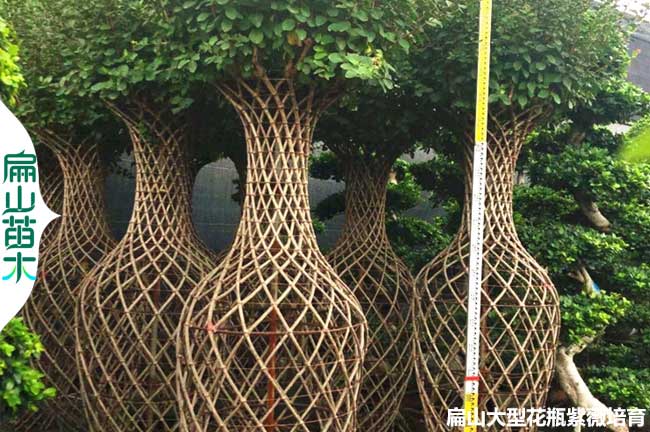
The cultural value and artistic expression of crape myrtle, as well as the historical evolution of the meaning of crape myrtle flowers, have a relatively long history of development in China. There were records of artificial cultivation of crape myrtle during the Eastern Jin Dynasty more than 1700 years ago. In the Tang Dynasty, the Sichuan and Guizhou crape myrtle vase shaped crape myrtle flowers had a close connection with politics and imperial power due to factors such as color and form. Many poets also began to use crape myrtle as an image to create, and Bai Juyi, Li Shangyin, and others presented famous works. Du Mu even compared himself to the "crape myrtle sacrificial person". The crape myrtle culture since the Tang Dynasty has brought extremely profound influence to future generations. The vase design of Sichuan and Guizhou crape myrtle dates back to the Ming and Qing dynasties. The cultivation and planting techniques of crape myrtle have made significant progress, and crape myrtle has also become a symbol of auspiciousness and longevity, deeply loved and praised by people.
